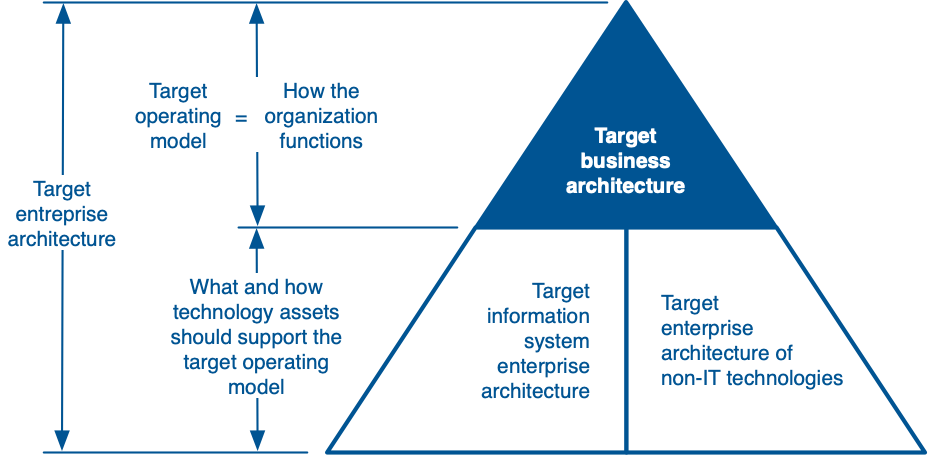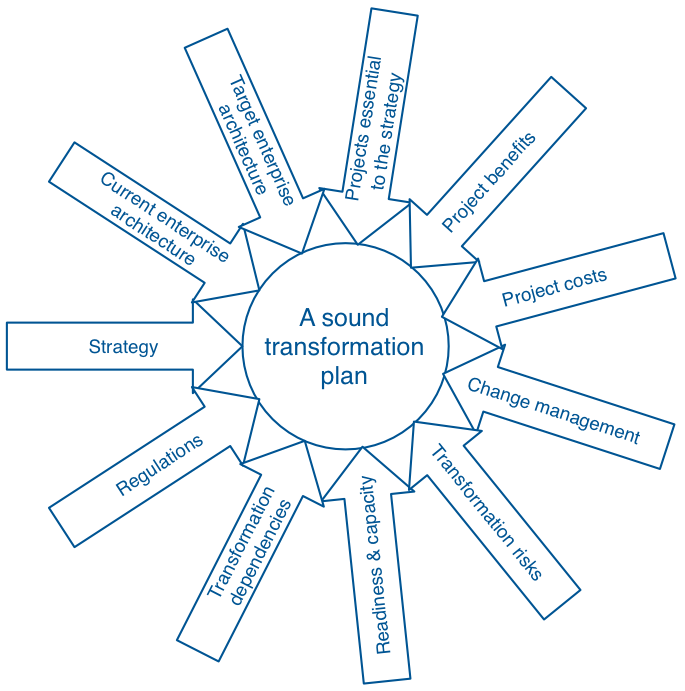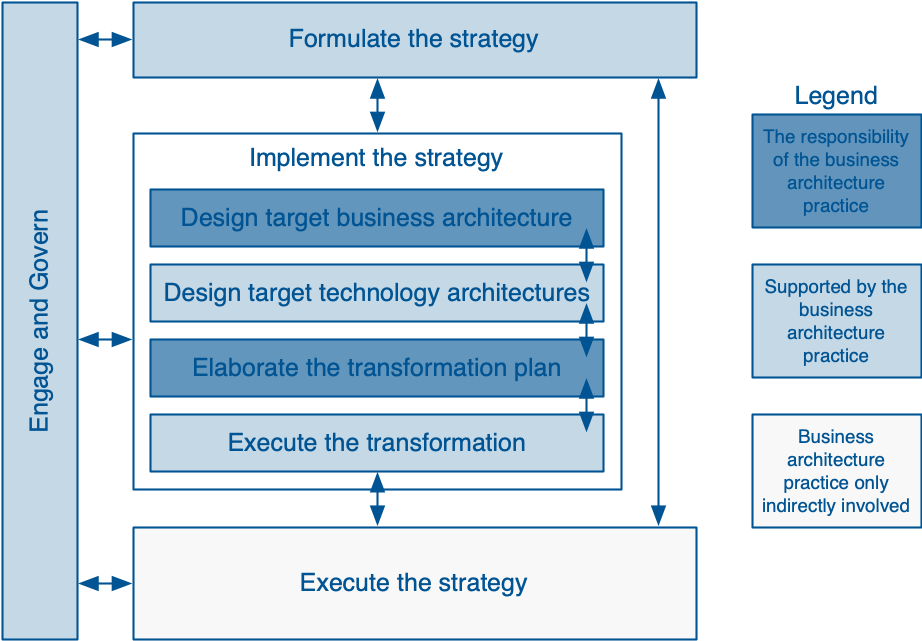
Business architecture is an emergent management discipline whose goal is to design and plan the transformation of an organization. Unlike approaches such as Lean and Six Sigma, business architecture does not focus on optimizing individual processes, but on optimizing the organization as a whole. In addition to processes, business architecture examines capabilities, knowledge, information, organizational architecture and brands, as well as the interrelationships between these building blocks of the organization. This exercise helps to identify the true root causes of the problems facing the organization and to remediate them with the right changes.
Business architecture is one of the three components of enterprise architecture (see Figure 1). The other two are information technology architecture and business technology architecture. The latter focuses on the plants, production equipment, transportation assets, and other non-IT technology assets used in the various activities of the organization.

Figure 1
What Are the Benefits of Business Architecture?
Traditionally, companies are optimized one part at a time (e.g., a department or a process). This siloed approach allows for some increase in business performance. However, it often leads to poor integration between the different parts of the company.
To make much greater performance gains, a holistic approach must be used. As an analogy, think of Gutenberg’s printing press (see Figure 2). Optimizing each of its parts independently (e.g., making them out of metal instead of wood) would certainly produce performance gains. However, to make much larger gains, the entire functioning of the press must be re-imagined, as was done to arrive at today’s high-speed laser printers. The business architecture approach does the same. It rethinks the functioning of the company as a whole.
Business architecture optimizes the different parts of the enterprise so they work as well together as individually. This exercise creates a global vision that identifies and outlines all the changes to the way the company works that are required for the achievement of the strategic objectives. This global vision very often includes changes that are very different from those that would result from an optimization by silo. With its help, it becomes much easier to make the right changes, to make them in synergy with each other and to ensure that they are in line with the company’s strategy.Moreover, this vision allows to determine the order in which the different changes should be made in order to maximize their collective benefits and minimize their overall costs and risks.

Figure 2
What Is the Transformation Plan?
The transformation plan identifies and sequences the transformation projects that must be executed during the next three to five years in order to improve the organization’s ability to execute its strategy. The transformation plan must encompass all of the slices of the organization that have been architected so far. Its elaboration must account for the need to continuously improve the organization’s financial performance; the extended organization’s capacity and readiness to transform itself; the need to build and maintain momentum throughout the implementation of the strategy; and the strategic importance, dependencies, benefits, costs, elapsed time to completion, assumptions and risks associated with the transformation projects.

Figure 3
What Is the Business Architecture Practice?
The internal business architecture practice, which is responsible for architecting the target business architecture and elaborating the transformation plan, and contributes to the other strategy formulation, implementation and execution activities the organization must master to create and maintain a competitive advantage.

Figure 4
ASATE Group has developed three complementary frameworks – the ASATE Group Strategic Plan Framework, the ASATE Group Capability Framework and the ASATE Group Strategy Management System – to help organizations leverage business architecture to successfully formulate, implement and execute their strategy. These frameworks are documented in our book Business Architecture – The Missing Link in Strategy Formulation, Implementation and Execution.
